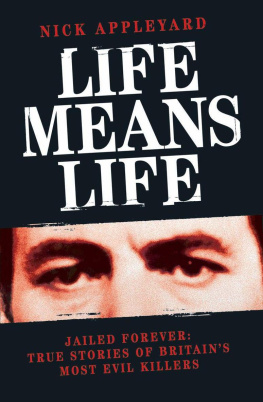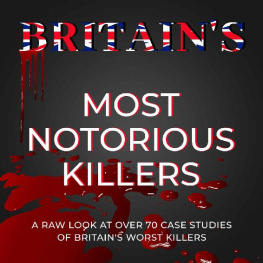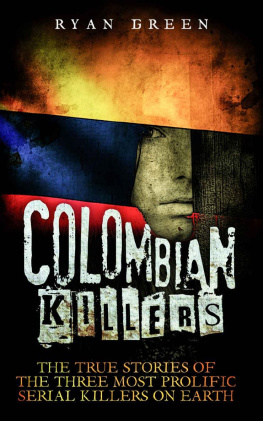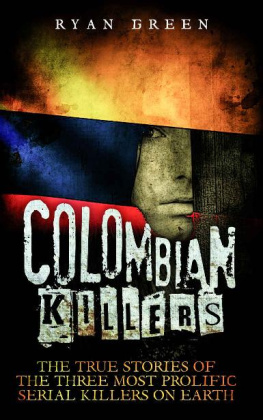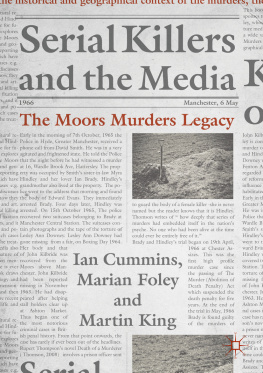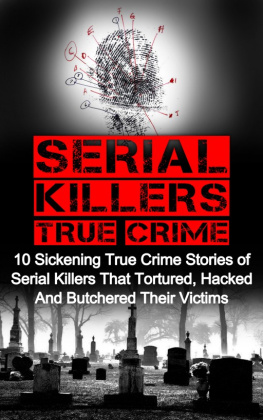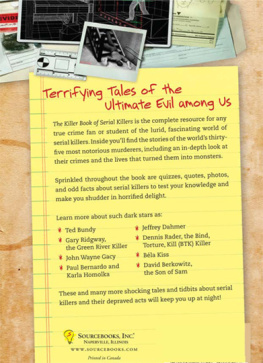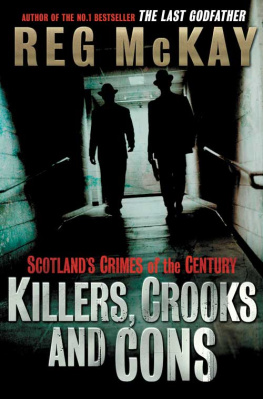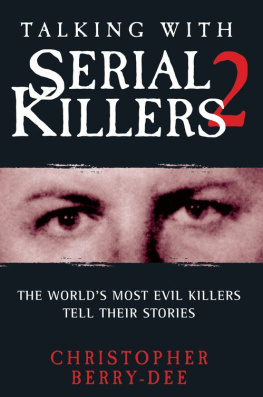ACKNOWLEDGEMENTS
Special thanks to my girlfriend Emily Lyons for all her help reading, writing and researching this book. It could not have been published without her. Cheers also to Deano and Mark Harris for their advice.
CONTENTS
INTRODUCTION
W hile anyone convicted of murder in the UK is automatically handed a life sentence, for only a tiny fraction does life really mean life. This grisly elite includes Dennis Nilsen, who butchered a string of young men in London, Rose West who with her husband Fred raped, tortured and murdered girls and women in the Gloucester area, and Ian Brady, one half of the Moors Murderers.
The crimes involved are of unparalleled savagery, perversion or scale. For these killers there is no hope of rehabilitation for society has ruled they must never walk the streets again. They are the men and one woman who committed the crimes that shocked and outraged Britain, and the courts have ruled they must end their days behind prison bars. In their wake, they leave a trail of death and devastation that both fascinates and revolts the world. Their trials have uncovered stories that horror writers would discard as outlandish; fascination for them is so enduring that every scrap of gossip about their life behind bars is devoured by the public, even decades after they were caged.
Crimes of this magnitude inevitably spark debate over the restoration of the death penalty. Within living memory every killer featured in this book would have gone to the gallows. In 1861 the Offences Against the Person Act dictated that anyone who murdered a fellow human must be executed, and so it was that all convicted murderers died, by hanging, for almost a century.
After many years, campaigners for the abolition of the death penalty secured a partial victory with the 1957 Homicide Act, which restricted capital punishment to cases of the five worst types of murder. They were, in the words of the Act: Murder in the course or furtherance of theft, murder by shooting or causing an explosion, murder while resisting arrest or during an escape, murder of a police officer or prison officer and two or more murders of any type committed on different occasions. Killers who did not meet the new criteria for hanging were given mandatory life prison sentences. This substitute sentence did not mean a lifelong period of imprisonment. Rather, it meant the prisoner would spend a finite period in jail before being released when he or she was no longer deemed a danger to others.
The 1957 Act received as much criticism as it did support. After all, why should someone who shoots a man dead be eligible for execution, while another who intentionally kills by strangulation or with a knife is not? Also, murder in the course of theft was punishable by hanging, while murder in the course of rape merely carried a jail sentence. In many ways, the new death penalty guidelines were as unfair as before.
Eight years later, the 1965 Murder (Abolition of the Death Penalty) Act replaced capital punishment with a mandatory sentence of life imprisonment. The last executions in Britain were Anthony Allen, 21, and Gwynne Owen Evans, 24, who were hanged respectively in Walton Prison, Liverpool, and Strangeways Prison, Manchester, on 13 August 1964. They had murdered a man while robbing him in his home on 7 April of the same year.
For almost two decades the basic rules of sentencing for murder in Britain went unchanged until 1983 when the tariff system was introduced. The new rules allowed Home Secretaries to set the minimum terms that convicted killers would serve before being eligible for parole on life licence. The arrival of the new system brought with it the whole life tariff, a sentence reserved for those who commit the most heinous of crimes. Successive Home Secretaries used this power to increase the sentences of several high-profile murderers, many of whom feature in this book.
In November 2002, new human rights legislation and a Law Lords ruling stripped Labour Home Secretary David Blunkett of the power to set tariffs. Lord Bingham said the power exercised by the Home Secretary to decide the length of sentences was incompatible with Article 6 of the European Convention on Human Rights the right of a convicted person to have a sentence imposed by an independent and impartial tribunal. The minimum length of a life sentence is now set by the trial judge although the Attorney General can still appeal to the High Court if he considers a sentence unduly lenient and the Lord Chief Justice then has the power to increase that sentence.
In response to being stripped of the power to keep killers behind bars, Blunkett outlined new minimum terms to be used by sentencing judges. All convicted murderers are now sentenced to life in prison but judges set their tariffs. Starting points of 15 and 30 years are available to trial judges, depending on the severity of the crime. These tariffs can be lowered by mitigating factors like provocation and increased by aggravating factors, such as the macabre disposal of a body. Whole life orders are the starting point in any case where two or more murders are committed that involve a substantial degree of premeditation, or sexual or sadistic conduct. This also includes the killing of a child involving any of the above factors.
Schedule 21 of the Criminal Justice Act 2003 operates as a guide to all sentencing judges in Britain. Section 4 (2) of Schedule 21 states that a whole life order applies in the cases of:
(a) the murder of two or more persons, where each murder involves any of the following
(i) a substantial degree of premeditation or planning,
(ii) the abduction of the victim, or
(iii) sexual or sadistic conduct,
(b) the murder of a child if involving the abduction of the child or sexual or sadistic motivation,
(c) a murder done for the purpose of advancing a political, religious or ideological cause, or
(d) a murder by an offender previously convicted of murder.
Schedule 21 also states that to qualify for a whole life tariff the offender must have been aged 21 or over at the time of the offence.
Soham murderer Ian Huntley, who killed 10-year-olds Holly Wells and Jessica Chapman in his home in August 2002, did not have his minimum prison term set at his 2003 trial because the system on serving life sentences was being altered at the time. Instead sentencing was postponed until 29 September 2005 when the trial judge, Mr Justice Moses, had to consider the new principles set out under the Criminal Justice Act.
In deciding whether to issue Huntley with a whole life tariff, the judge had to consider the principles set out in Schedule 21. Explaining his decision not to issue such a sentence, Mr Justice Moses said the Huntley case lacked a proven element of abduction because the meeting between the girls and Huntley, while his then girlfriend Maxine Carr was away, had been by chance.
The judge explained: It is likely that the defendant took advantage of the girls acquaintance with Carr to entice them into the house, but that could not be proved. He added: Their presence in the house thus remains unexplained. There is a likelihood of sexual motivation, but there was no evidence of sexual activity, and it remains no more than a likelihood. In those circumstances, the starting point should not be a whole life order. Instead, the judge chose a starting point of 30 years and added an extra 10 years because the murders were aggravated by Huntleys abuse of the girls trust and his deceitfulness afterwards. He said: The two children were vulnerable and obviously trusted the defendant because of his position in the school as caretaker and relationship with Carr.

